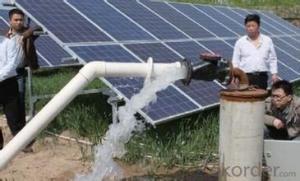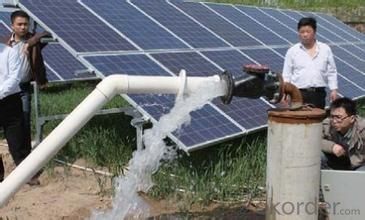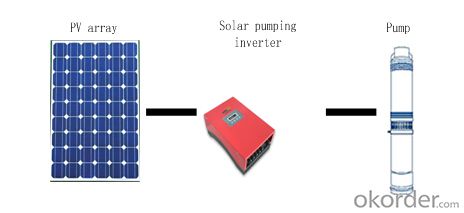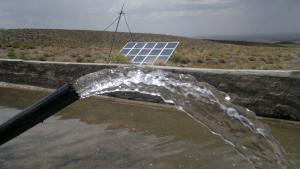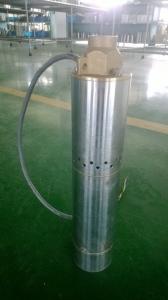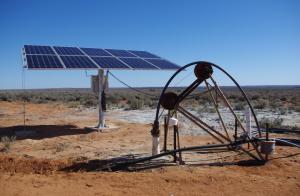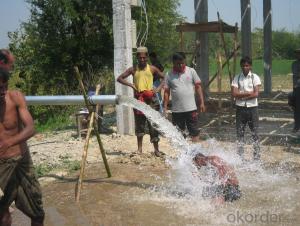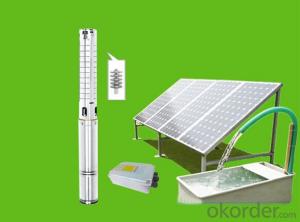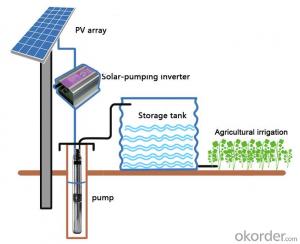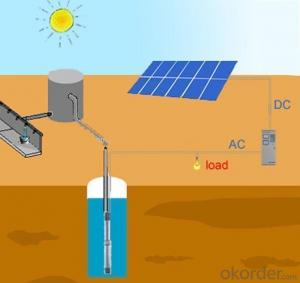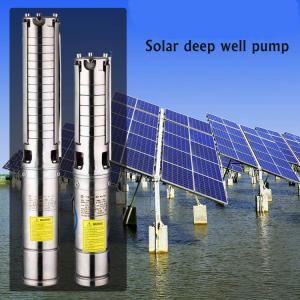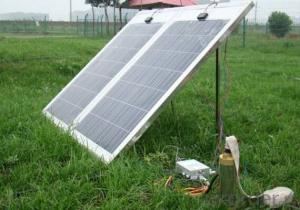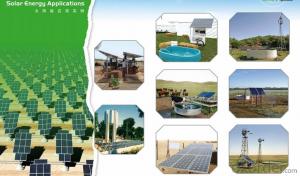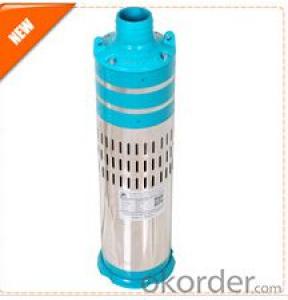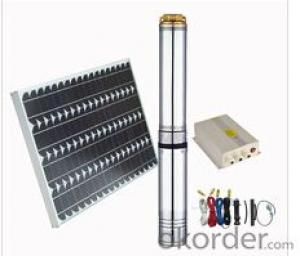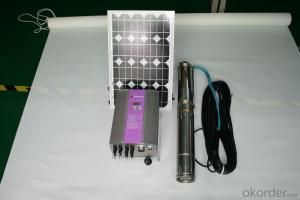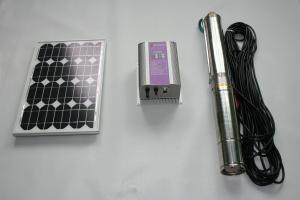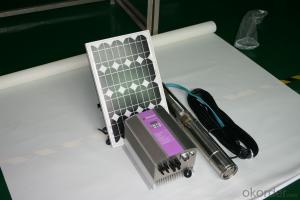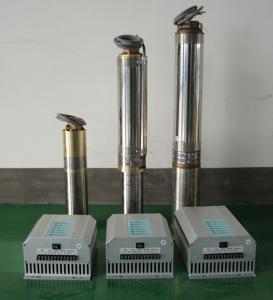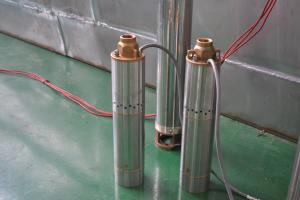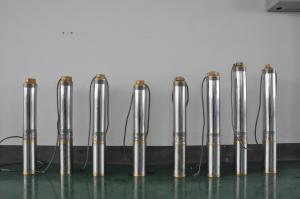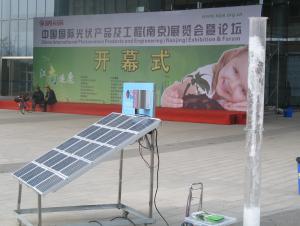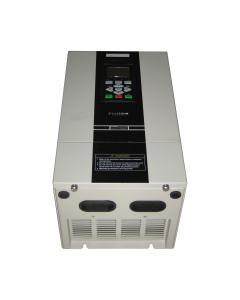Solar Water Pump System 0.1KW-37KW for Agricultural Irrigation/ Helen
- Loading Port:
- Shanghai
- Payment Terms:
- TT OR LC
- Min Order Qty:
- 10 pc
- Supply Capability:
- 1000 pc/month
OKorder Service Pledge
OKorder Financial Service
You Might Also Like
The photovoltaic pumping system is different from the traditional AC pumping system , and the photovoltaic pumping system utilizes solar cells convert solar energy into electric energy , then the photovoltaic pumping inverter drives ac motor for the pump running , and pumping up water from water well , river , lake etc areas and then transport to the destination to satisfy our requests for the water demand .
Photovoltaic arrays adopts solar radiation energy to convert it to electric power ,providing the motive power for the whole system . And the function of the solar pumping inverter is converting the DC power output from PV array to AC power to drive the pump to finalize the water pumping up as well as adjusting the output power real-timely according to the change of sunlight intensity , in this way , the system realizes the max power point tracking and the solar energy can be utilized furthest
The whole system solves the water pumping up requests perfectly , omitting the battery bank and charge controller etc equipments , so it is very economical and environmental . Since they are with the merits of low carbon , energy conversation , environmental protection etc , so they have a broad market foreground and great social value
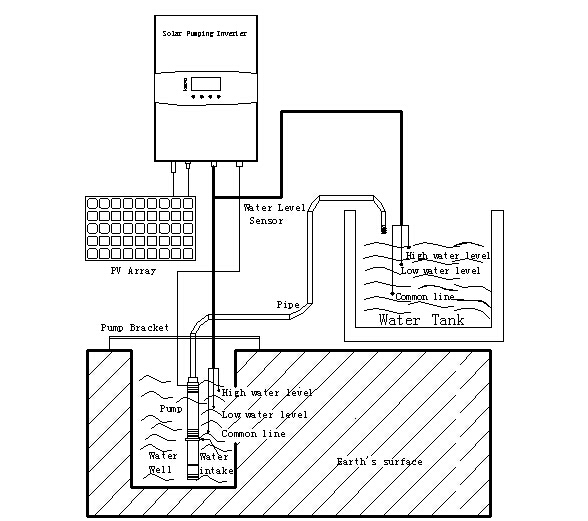
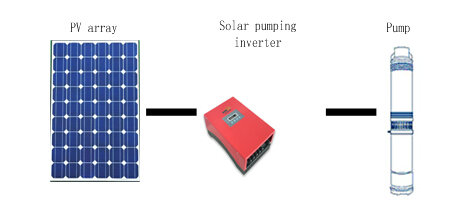
2.2 Application
Agricultural irrigation
Desert manage
Domestic water
Grassland animal husbandry
city waterscape
Island water supply
Landscape and fountain system of municipal engineering , city square , hotels and residence community
2.3 About product
This product is using a high performance digital signal processing chip, can provide solution for solar water pumpingsystem with high cost performance. Solar pumping system as a whole block diagram as shown in 2.
SHP series inverter has the following features:
a. True max power tracking technology (TMPPT) with our own intellectual property; effectively improve the use ratio of PV array. The stable tracking efficiency can reach 99.2% , Solving the problem of bad tracking efficiency and running unstability under the situation of sunlight intensity quick change when comparing with the traditional MPPT method .
b. Adopt efficient IPM power module from Mitsubishi Company with high reliability.
c. With the function of high and low water level detection , high safety factor.
d. Automatic anti-drying protection function , with multi-protection for motor
e. Multi-language LCD display , easy for operation , very user-friendly
f. The independent developed principal computer with our own intellectual properties , remote monitoring is available
g. Modular design , direct plug-in terminal , good-looking appearance, easy for installation , operation and maintenance .
h. Suitable for the pump adopted three phase asynchronous motor
i. Complete digital control , with the function of full automatic running and data storage .
j. Perfect protection system , with the protection function for lighting , over voltage , under voltage , short circuit , over loads , water drain off , low sunlight , over heating etc ,
k. Adopt the complete radiating system , so radiating efficiency is better and the service life is longer
l. Through strict environmental test , adapt the rigorous environment :-10℃~+50℃
m.No impacted mains supply power switch function (optional ), All-weather running available
n. Through strict environmental test , adapt the rigorous environment :-10℃~+50℃
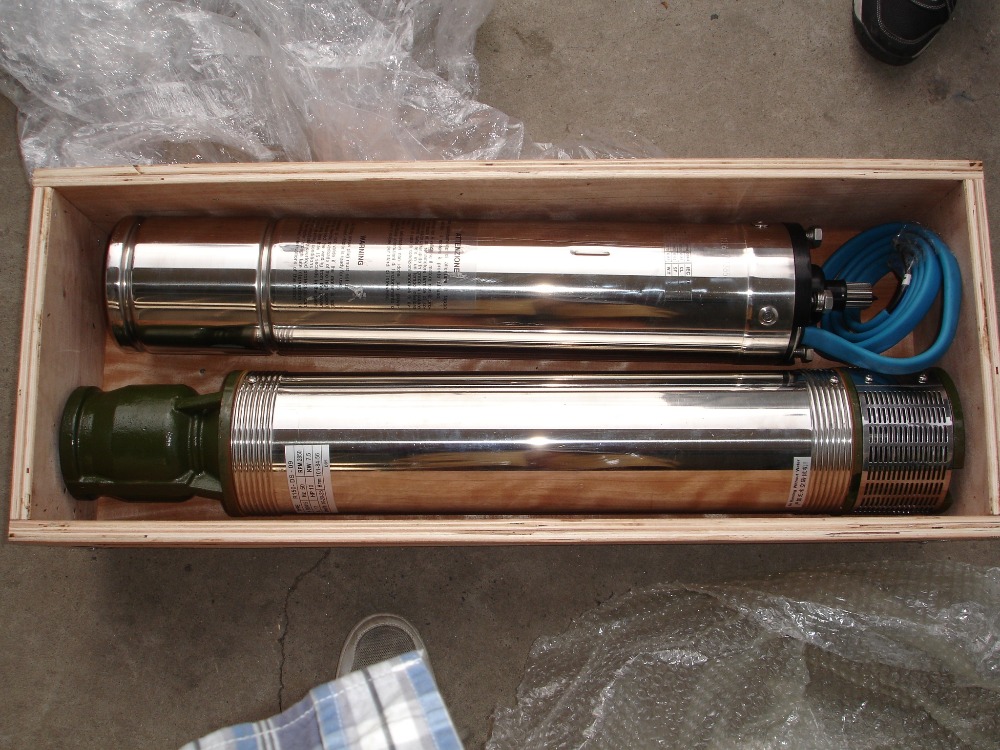
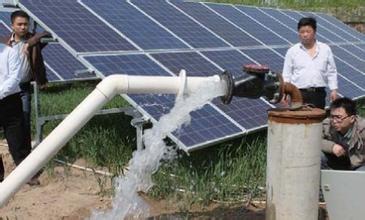
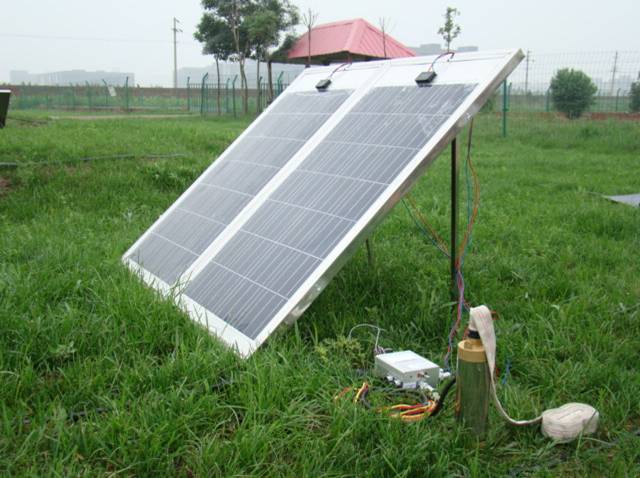
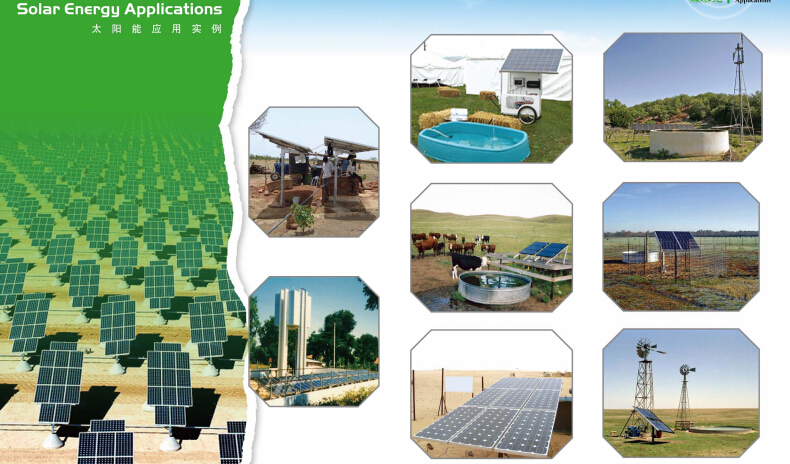
- Q: Can a solar pump be used in areas with high salinity or mineral content in water?
- Yes, a solar pump can be used in areas with high salinity or mineral content in water. Solar pumps are designed to be used in various water sources, including those with high salinity or mineral content. However, it is important to consider the type of solar pump and its compatibility with the specific water conditions. Some solar pumps may require additional filtration systems or special materials to prevent damage from high salinity or mineral content. It is recommended to consult with a solar pump manufacturer or a water expert to determine the best pump and any necessary precautions for using it in such areas.
- Q: Can a solar pump be used for water supply in recreational facilities or parks?
- Yes, a solar pump can be used for water supply in recreational facilities or parks. Solar pumps can efficiently draw water from a source like a well or a nearby water body and distribute it for various purposes such as irrigation, fountains, or even drinking water supply. They are a sustainable and cost-effective solution for providing water in areas without access to grid electricity.
- Q: How does a solar pump handle water source contamination from sewage leaks?
- A solar pump does not have the capability to handle water source contamination from sewage leaks. It is primarily designed to extract and pump water from a source, but it does not possess any specific mechanisms to treat or purify contaminated water. In case of sewage leaks or water source contamination, it is essential to address the issue at its root cause and employ appropriate water treatment methods before using a solar pump or any other water extraction system.
- Q: Are there any compatibility issues with integrating a solar pump into an existing water system?
- When integrating a solar pump into an existing water system, compatibility issues may arise. Common issues include the following: 1. Power requirements: Efficient operation of solar pumps typically relies on specific voltage and current inputs. If the existing water system cannot provide the required power, modifications or upgrades may be necessary to accommodate the solar pump. 2. Water flow rate: It is important to ensure that the existing water system can handle the desired flow rate of the solar pump without causing pressure or performance problems, as solar pumps have specific flow rate capacities. 3. Pipelines and fittings: The pipelines and fittings in the existing water system may not be suitable for connecting with a solar pump in terms of size and type. In such cases, proper integration may require modifications or the addition of adapters. 4. Control systems: Solar pumps often come with their own control systems, such as solar controllers, inverters, or sensors. Integrating these control systems with the existing water system may necessitate additional wiring or modifications to the current control infrastructure. 5. Voltage compatibility: If the existing water system operates on a different voltage from the solar pump, a voltage converter or transformer may be needed to ensure safe operation and compatibility. To ensure a seamless integration and avoid compatibility issues, it is advisable to consult with a professional or the manufacturer of the solar pump. They can assess the existing water system and determine the necessary modifications or upgrades required.
- Q: Are there any limitations to the flow rate of a solar pump?
- Yes, there are limitations to the flow rate of a solar pump. The flow rate of a solar pump is dependent on factors such as the size and capacity of the pump, the power output of the solar panel, the intensity of sunlight, and the depth and source of water. These factors can affect the efficiency of the pump and limit its maximum flow rate.
- Q: Can a solar pump be used in areas with limited water sources?
- Yes, a solar pump can be used in areas with limited water sources. Solar pumps are designed to operate with minimal access to electricity and are often used in remote areas where traditional power sources are unavailable. By harnessing solar energy, these pumps can draw water from underground sources such as wells, boreholes, or other limited water sources, providing a sustainable and reliable water supply solution.
- Q: Are solar pumps cost-effective compared to traditional pumps?
- Yes, solar pumps are cost-effective compared to traditional pumps. Solar pumps use the sun's energy to operate, eliminating the need for electricity or fuel costs. They have lower maintenance and operational costs, making them more affordable in the long run. Additionally, solar pumps have a longer lifespan and can provide reliable water supply in remote areas, reducing the need for expensive infrastructure. Overall, the initial investment in a solar pump may be higher, but the savings in operating costs make them a more cost-effective option.
- Q: How does a solar pump handle water source contamination from fracking activities?
- A solar pump does not directly handle water source contamination from fracking activities. A solar pump is a device that utilizes solar energy to pump water from a source, such as a well or a reservoir, to a desired location. It does not have any specific mechanism to deal with water contamination caused by fracking activities. However, water source contamination from fracking can be addressed through proper regulations, monitoring, and treatment processes implemented by relevant authorities and industries involved in fracking operations.
- Q: Does the efficiency of a solar pump decrease over time?
- The efficiency of a solar pump may decrease as time goes on. Several factors contribute to this decline in efficiency. One major factor is the aging of the solar panels themselves, which degrade over time due to exposure to weather conditions, UV radiation, and other environmental factors. As the panels degrade, their ability to convert sunlight into electricity decreases, resulting in a lower overall efficiency for the pump. Additionally, the efficiency of the pump's motor may also decrease over time. Wear and tear on motor components, such as bearings, seals, and brushes, can lead to reduced performance and efficiency. If these components are not properly maintained and serviced, they can become less efficient and require more power to operate the pump effectively. Furthermore, the accumulation of dust, dirt, and debris on the solar panels can also affect the pump's efficiency. When the panels are dirty, they absorb less sunlight, resulting in lower energy production and reduced efficiency. Therefore, it is crucial to regularly maintain and clean the solar panels, as well as properly service the motor components, to prevent and minimize the decline in efficiency over time. By taking these necessary steps, the efficiency of a solar pump can be maintained and, in some cases, even improved.
- Q: Are there any limitations to the temperature range a solar pump can operate in?
- Yes, there are limitations to the temperature range in which a solar pump can operate. Solar pumps are designed to function optimally in a certain temperature range, typically between -20 degrees Celsius to 50 degrees Celsius (-4 degrees Fahrenheit to 122 degrees Fahrenheit). Beyond these temperature extremes, the performance and efficiency of the solar pump may be significantly reduced. In extremely cold temperatures, the solar pump's components, such as the pump motor and pipes, may freeze, leading to damage or malfunction. To prevent freezing, additional insulation or heating elements may be required, which can increase the cost and complexity of the system. On the other end of the spectrum, excessive heat can also pose challenges for solar pumps. High temperatures can cause overheating of the motor, reducing its lifespan and efficiency. In some cases, the pump may shut down automatically to prevent damage. Proper ventilation and cooling mechanisms are necessary to ensure the pump operates within acceptable temperature limits. It is essential to consider the local climate and environmental conditions when installing a solar pump system. Extreme temperatures, whether too hot or cold, can affect the pump's performance and longevity. Consulting with a professional and selecting a solar pump model suitable for the specific temperature range is crucial to ensure reliable and efficient operation.
Send your message to us
Solar Water Pump System 0.1KW-37KW for Agricultural Irrigation/ Helen
- Loading Port:
- Shanghai
- Payment Terms:
- TT OR LC
- Min Order Qty:
- 10 pc
- Supply Capability:
- 1000 pc/month
OKorder Service Pledge
OKorder Financial Service
Similar products
Hot products
Hot Searches
Related keywords
